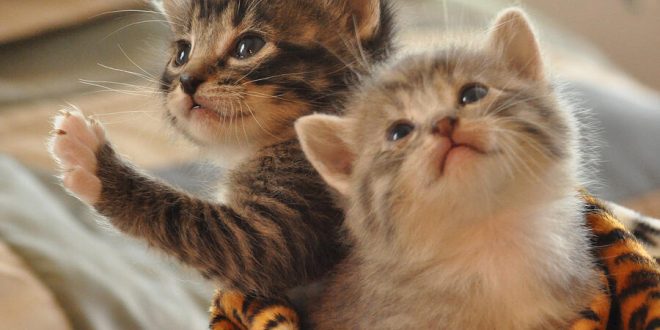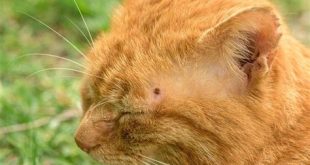A cat’s life is filled with mystery, independence, and moments of affection. From the moment they are born to their later years, cats experience distinct stages of growth and development. While every cat is unique, understanding the different phases of a cat’s life can help ensure they receive the proper care and attention they need. In this article, we will explore the journey of a cat’s life, from playful kittenhood to their graceful senior years, and offer insights into how to best care for your feline friend at each stage.
Kittenhood: A Time of Discovery and Play
Kittenhood is one of the most adorable and energetic stages of a cat’s life. From birth to around six months, kittens are full of curiosity and playfulness. This is the time when they learn about the world through exploration, play, and interaction with their littermates and mother. Kittens are incredibly active, constantly running, climbing, and engaging in mock battles with their siblings. This play is essential as it teaches them valuable social skills and helps to develop their coordination and hunting instincts.
During kittenhood, it’s important to start socializing your cat and exposing them to a variety of environments, people, and other pets. Early socialization helps your kitten grow into a confident, well-adjusted adult cat. Basic training, such as using the litter box and scratching posts, should also be introduced at this stage.
Veterinary care is crucial during kittenhood. Your kitten will need vaccinations, flea and worm treatments, and a healthy diet to ensure they grow into strong, healthy adults.
Adolescence: Testing Boundaries and Gaining Independence
Between six months and two years, your cat will enter adolescence. During this stage, cats begin to mature both physically and emotionally. They become more independent, testing boundaries and exploring their newfound autonomy. You may notice an increase in activity levels, as adolescent cats are often full of energy and curiosity. This is also the time when cats might show some behavioral changes, such as marking territory or becoming more vocal.
Adolescence is when many cats reach sexual maturity, so it’s a good idea to have your cat spayed or neutered if they haven’t already been. This helps prevent unwanted behaviors like spraying and the risk of unplanned pregnancies. During this phase, your cat will need mental stimulation, regular play, and exercise to keep them engaged and prevent boredom.
Adulthood: The Peak of Strength and Confidence
By the time your cat reaches 2 to 10 years of age, they are fully grown and have settled into their adult personality. Adult cats are generally more balanced and less hyperactive than kittens and adolescents. They’ve developed their own routines and have figured out their preferences for affection, play, and solitude.
During adulthood, your cat is typically at their healthiest and most physically fit. This is the stage where cats are most likely to be independent but still enjoy companionship and attention from their human family. They may be more relaxed, spending their days lounging in the sun, but still retain a strong instinct to hunt, whether that’s chasing toys or exploring the outdoors.
While adult cats are generally easy to care for, they still require regular veterinary check-ups, a balanced diet, and mental stimulation. Cats can live a long and healthy life in this stage, especially if they are kept indoors and have a safe, stimulating environment to enjoy.
Senior Years: The Graceful Golden Age
Around 10 years of age and older, cats enter their senior years. During this time, their energy levels may decrease, and you might notice that they sleep more often or prefer quiet, comfortable spots in the house. Senior cats may also begin to experience age-related health conditions, such as arthritis, dental issues, and vision or hearing loss.
While senior cats may slow down physically, they often retain their affectionate nature and enjoy spending time with their owners. It’s important to make adjustments to their environment to keep them comfortable, such as providing soft bedding, making litter boxes easily accessible, and keeping food and water dishes within reach.
Routine veterinary visits are even more critical for senior cats, as early detection of health issues can help manage symptoms and improve quality of life. Special diets, joint supplements, and medications may be necessary to support your cat’s health as they age.
Cherishing Each Stage of a Cat’s Life
Every phase of a cat’s life brings its own joys and challenges. From the playful innocence of kittenhood to the wisdom and grace of their senior years, each moment with your cat is an opportunity to strengthen the bond you share. While cats may be known for their independent nature, they also deeply appreciate love, care, and attention from their human companions.
As a cat owner, your role is to ensure that your feline friend is happy and healthy throughout every stage of their life. Whether you’re navigating the energetic kitten years, the curious adolescence, or the peaceful senior years, your cat’s love and companionship will remain a constant. By providing them with proper care, attention, and respect, you’ll ensure that your cat’s life is filled with the comfort and affection they deserve.
In the end, the life of a cat is a precious gift, and every purr, head nudge, and playful moment is a reminder of the unique bond between humans and felines.
 PAWS AND WHISKERS PET CARE
PAWS AND WHISKERS PET CARE




